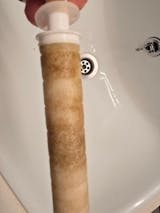Reservations. Uno Vita claims not That the products we market can cure illness, even where this is alleged by others we may have referred to. All use of supplements takes place at its own responsibility and should be done in consultation with health -science qualified personnel. Consult your doctor if in doubt.
-
Altrient Liposomal Vitamin C (1000 mg)
$77 - (excl. VAT)
Unit price - (excl. VAT) /Unavailable -
Liposomal Vitamin C - QuickSilver (EU)
$53 - (excl. VAT)
Unit price - (excl. VAT) /Unavailable -
$67 - (excl. VAT)
Unit price - (excl. VAT) /Unavailable -
The One - liposomal energy supplement for mitochondria
$112 - (excl. VAT)
Unit price - (excl. VAT) /Unavailable -
Liposomal Vitamin C with R-Lipoic Acid
$43 - (excl. VAT)
Unit price - (excl. VAT) /Unavailable -
$75 - (excl. VAT)
Unit price - (excl. VAT) /Unavailable -
Altrient liposomal magnesium L-threonate
$119 - (excl. VAT)
Unit price - (excl. VAT) /Unavailable -
Liver Sauce (100 ml - super detox)
$87 - (excl. VAT)
Unit price - (excl. VAT) /Unavailable -
$87 - (excl. VAT)
Unit price - (excl. VAT) /Unavailable -
Vitamin C - 24-Hour Liposomal Hydrogel Formula
$42 - (excl. VAT)
Unit price - (excl. VAT) /Unavailable -
$49 - (excl. VAT)
Unit price - (excl. VAT) /Unavailable -
Quicksilver Scientific artemisinin
$93 - (excl. VAT)
Unit price - (excl. VAT) /Unavailable -
$69 - (excl. VAT)
Unit price - (excl. VAT) /Unavailable -
$52 - (excl. VAT)
Unit price - (excl. VAT) /Unavailable -
$129 - (excl. VAT)
Unit price - (excl. VAT) /Unavailable -
Ultra Energy Liposomal Adaptogenic Blend
$83 - (excl. VAT)
Unit price - (excl. VAT) /Unavailable -
$46 - (excl. VAT)
Unit price - (excl. VAT) /Unavailable -
$63 - (excl. VAT)
Unit price - (excl. VAT) /Unavailable -
Luteolin Pro Liposomal (150 mg)
$58 - (excl. VAT)
Unit price - (excl. VAT) /Unavailable -
Purovitalis Liposomal Quercetin
$56 - (excl. VAT)
Unit price - (excl. VAT) /Unavailable -
$67 - (excl. VAT)
Unit price - (excl. VAT) /Unavailable -
$65 - (excl. VAT)
Unit price - (excl. VAT) /Unavailable -
Baicalein Pro Liposomal 200 mg
$63 - (excl. VAT)
Unit price - (excl. VAT) /Unavailable -
$61 - (excl. VAT)
Unit price - (excl. VAT) /Unavailable





























